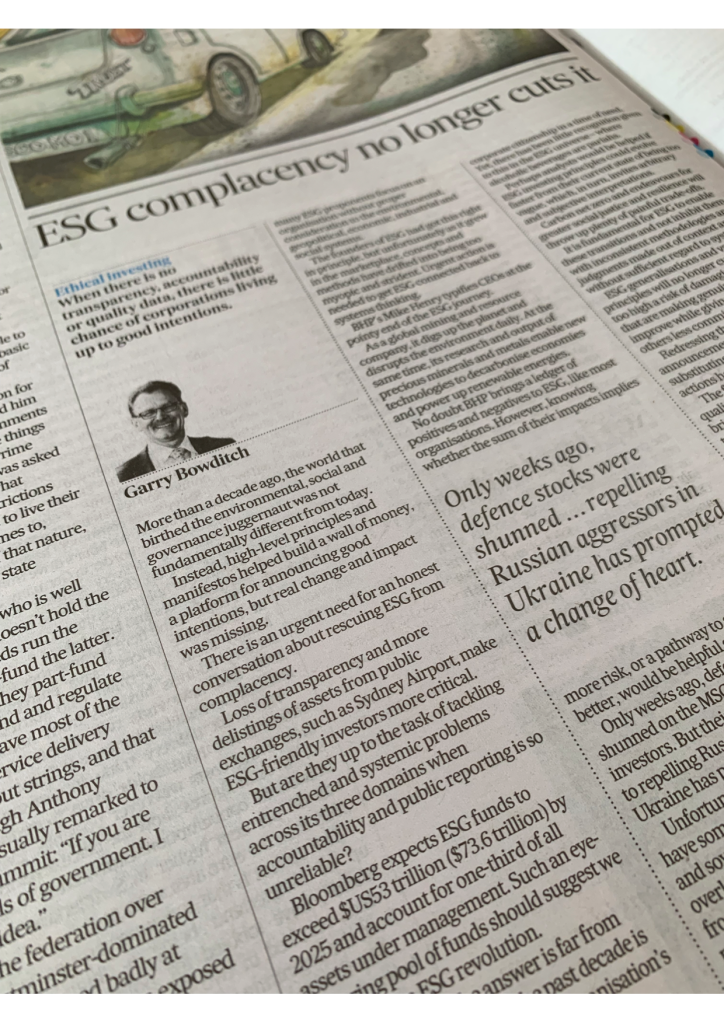
A version of this article was published online in the Australian Financial Review on 19-20 March 2022.
As Sydneysiders celebrate the 90th Anniversary of the Sydney Harbour Bridge (SHB) this weekend, we do so with gratitude for the fantastic benefits of our ‘coat hanger’ in Sydney and Australia. However, let’s also reflect on what we need to do to ensure those living in 2112 – just 90 years from now – might show a similar level of gratitude for our stewardship today.
What is intriguing about the SHB is its immense size. There were very few cars in the formative planning years leading up to construction in 1922. For example, in 1919, just over 23,000 motor vehicles were registered in NSW. Yet upon completion in 1932, the SHB could handle 20,000 cars per hour – a staggering excess capacity that would trouble infrastructure ‘business cases’ today.
In 2022 there is no sense of extravagance – SHB is a vital corridor over-used and over-relied to keep commuters moving. It enabled Sydney to be globally competitive, attracting a Manhattan-quality workforce, underwrote excellent liveability and a place for entrepreneurs to catapult ideas to market.
Its grand arches have defined iconic images of Australia and created a much stronger sense of place and national pride. We are celebrating the alchemy of cities through the bridge in lifting our living standards and productivity that flow across the nation.
But don’t make the common mistake of thinking the SHB reflected a golden era where politicians were visionary and the community trusted. Instead, there was a prolonged incubation – it took 107 years to start construction finally.
After multiple failures to approve designs and pitches from private consortia through the 1800s, two Royal Commissions ensued that was pivotal to the SHB we have today. They helped clarify the issues – especially in protecting the freedom of maritime traffic on the harbour – the lifeblood of the colony. There were legitimate concerns a bridge would interfere with maritime traffic, and for a period, a tunnel was preferred but ultimately rejected as unworkable given the technology at the time.
Despite mounting pressures, severe outbreaks of disease, congestion and shortages of water and land in the colony – delays and indecision persisted about a possible solution. Accessing land on the north shore was paramount, but community concerns about toll gouging on a proposed bridge by private investors were widespread. Also, there was extreme resistance to more public indebtedness among country people to fund the bridge as this threatened government subsidies to prop up country rail services.
J.J. Bradfield was more than a great engineer; he was also a promising economist. He understood that the viability of the bridge demanded that benefits should exceed costs. Inspired by US social reformer Henry George, Bradfield conceived a land betterment tax recognising that land values at both ends of the bridge will rise dramatically. As commonly referred to today, value capture would fund the bridge, but it was torn apart in just over a decade (much like the Melbourne rail loop). As a result, NSW was on the brink of bankruptcy. Those peddling value capture as the silver bullet to fund grand projects like high-speed rail should see this as a cautionary message.
We should celebrate the achievement of SHB and those that made it happen. However, while megaprojects are the weapon of choice today to tackle our challenges, we should better acknowledge their many limitations. While Sydney Metro has the potential to be a great legacy to the future, the size and complexity of our challenges demand unrelenting transparency, leadership, and accountability to the community.
There is so much more to do, but happy 90th to an Aussie icon for now.

